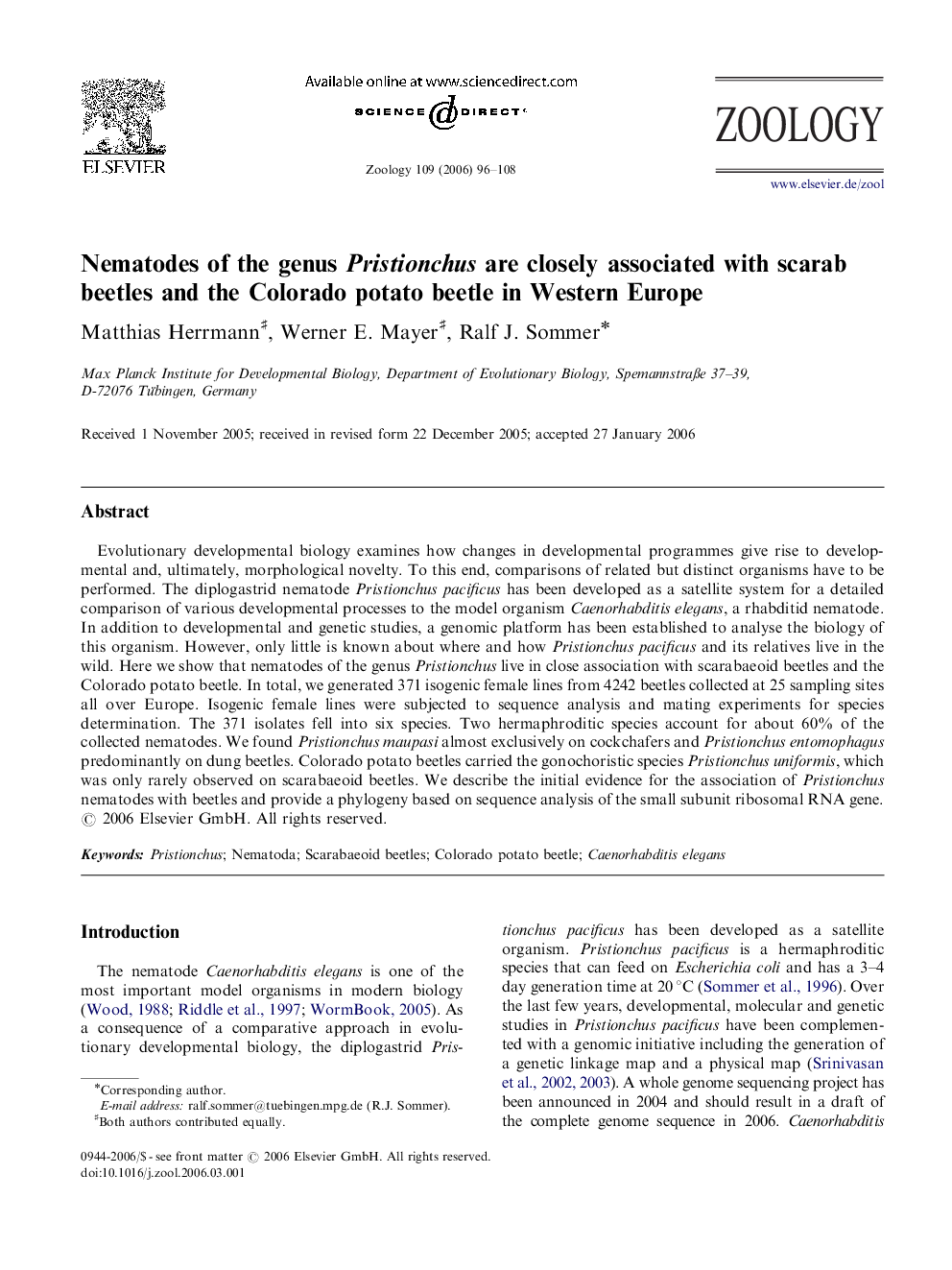| Article ID | Journal | Published Year | Pages | File Type |
|---|---|---|---|---|
| 2791414 | Zoology | 2006 | 13 Pages |
Evolutionary developmental biology examines how changes in developmental programmes give rise to developmental and, ultimately, morphological novelty. To this end, comparisons of related but distinct organisms have to be performed. The diplogastrid nematode Pristionchus pacificus has been developed as a satellite system for a detailed comparison of various developmental processes to the model organism Caenorhabditis elegans, a rhabditid nematode. In addition to developmental and genetic studies, a genomic platform has been established to analyse the biology of this organism. However, only little is known about where and how Pristionchus pacificus and its relatives live in the wild. Here we show that nematodes of the genus Pristionchus live in close association with scarabaeoid beetles and the Colorado potato beetle. In total, we generated 371 isogenic female lines from 4242 beetles collected at 25 sampling sites all over Europe. Isogenic female lines were subjected to sequence analysis and mating experiments for species determination. The 371 isolates fell into six species. Two hermaphroditic species account for about 60% of the collected nematodes. We found Pristionchus maupasi almost exclusively on cockchafers and Pristionchus entomophagus predominantly on dung beetles. Colorado potato beetles carried the gonochoristic species Pristionchus uniformis, which was only rarely observed on scarabaeoid beetles. We describe the initial evidence for the association of Pristionchus nematodes with beetles and provide a phylogeny based on sequence analysis of the small subunit ribosomal RNA gene.
